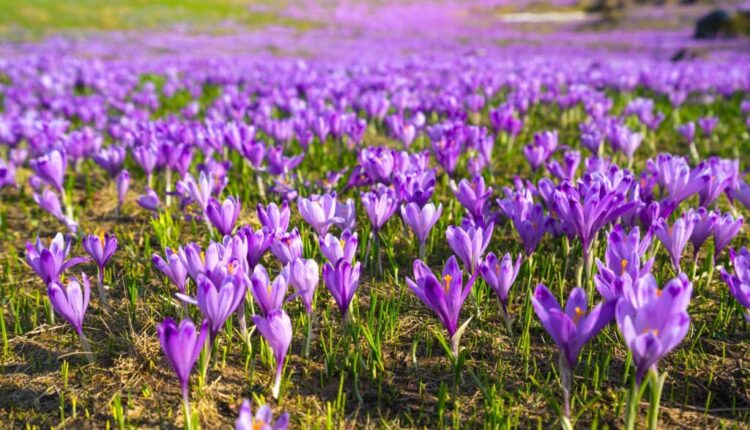Have you recently planted saffron crocus with great excitement and are waiting for it to bloom? Did you know that saffron crocus flowering time is in autumn? And did you know it’ll bloom about one month after planting and watering? If you have been waiting longer than that, it seems that something is not going right.
But, what? Why your saffron crocus is not blooming? You may have seen the green sprouts or leaves, but nothing more. Or maybe you have harvested saffron for the first year, but nothing more in the following years. So, what’s the reason behind that?
In this article, we have gathered all possible reasons that may have damaged or prevented your crocuses from flourishing. Let’s dive in without further ado.
What’s the problem with my saffron crocus flower?
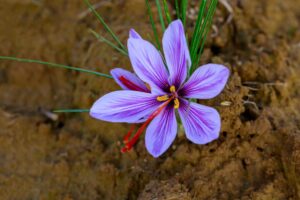
There are many reasons why your crocus is not growing or blooming at all. From the way you’ve planted the bulbs to irrigation and the type of soil can contribute to inefficient saffron growing. In the following, we’ll lay out some of the most common causes of saffron crocus flowing late or not blooming at all.
Unsuitable soil

You should dig 5 to 7 cm holes in the soil to plant saffron bulbs. After that, you need to refill the planter with soil in order to create the best environment for the corms to thrive. But what if you have purchased unsuitable soil? The corms need light and loose soil in order to break through it and thrive in the outside world.
However, heavy and thick soil will prevent that and suffocates saffron crocus flowers before they bloom. On the other hand, saffron bulbs will rot in wet soil. So, they need the type of soil that drains well and keeps them dry throughout the year.
Moreover, don’t forget that just like other types of herbs, saffron needs soil rich in minerals and other necessary properties. So, pay attention to that the next time you purchase potting soil for new bulbs or replace the current one.
Improper irrigation
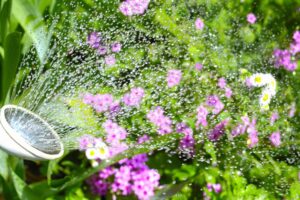
Many misunderstand when we say saffron needs a dry environment and think it doesn’t need water at all! Well, that’s far from the truth. Just like other plants, the moment saffron corms start to root, they need water to feed the bulb and help it thrive.
Check out our article on the 12 Properties Drinking Saffron Milk Fairer Skin
On the other hand, they don’t like it when the soil stays wet and doesn’t drain properly. That’s a little confusing right? But don’t worry. If you want your saffron crocus flower as early as possible, plant the corms in late spring. Then water them thoroughly and wait for green sprouts to show up before watering again.
However, if you noticed the soil is too dry (more than usual), irrigate more so that the roots are not left without enough supply to help the corms grow and bloom. This is probably the most vital part of planting saffron and the main reason why it doesn’t bloom.
Bad saffron corms
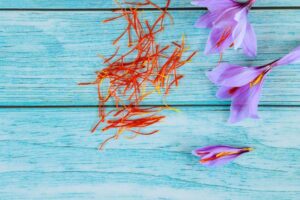
The most important part of growing saffron is the quality of its corms. You should purchase saffron bulbs from a well-trusted source. Also, you can check out whether the bulbs are fresh and healthy or rotted before purchasing them. In order to do so, just squeeze the corms between your fingers to feel their textures.
If they were squishy or flaky, it means that they are not good enough or even rotted. However, feeling a firm texture on your skin means your corms are fresh and ready to be planted. Remember, to plant them right after purchasing. All these little but crucial factors will affect how your saffron crocus flowers turn out to be.
Hungry animals and birds
Animals and birds love to dig up holes and eat the fresh bulbs inside the soil. So, if you have planted your crocuses in your garden or an open area, you should watch out for these greedy little creatures. Squirrels, rodents, and some kinds of birds are known to dig up holes and eat every edible bulb down there. On the other hand, larger animals, such as deer, are more likely to chew plants and flowers right after they grow or bloom.

So, in order to stop these animals from damaging your garden, either put cage around the corms or use metal strips and tie them around your saffron crocus flower.
Unexpected rainy year
As you might know, saffron bulbs will rot in wet soil as they love dry environments. If you have planted crocuses in an open area and it’s been raining for a couple of days in a row, there is a great chance your corms didn’t make it!
Check out our article on the Why My Saffron Crocus Is Not Blooming?
In order to make sure, dig up and look for blackish-brown spots on saffron bulbs. If you saw any sign of mould, cut away those parts or throw out the corm. You may even see green sprouts while the corms are affected with brown spots. It means that the whole bulb has not been infected yet. So, cut away those parts and plant the corm again. Check them out after a couple of days to make sure everything is fine and nothing is troubling your saffron crocus flowers again.
Warm winters!
Yes; the saffron crocus flower needs a warm and dry climate to thrive and flourish. But when its time for sleep, the corms need cold weather, around 2 to 5 C, in order to break their dormancy cycle. So, if your region has a hot climate or the winter is warmer than expected, your saffron bulbs will be in trouble.
Although, there is always a way out. The only thing you should do in this situation to save your corms from rotting and dying is to put them in the fridge. Dig them up in the late-winter and place them in the refrigerator for 8 weeks. Then plant them again in soil for the spring to come.
Heavy traffic
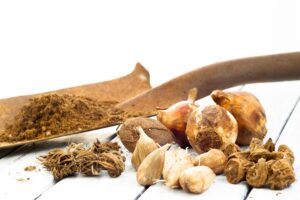
Each year you harvest saffron crocus flower, the corms multiply and spread through the ground or planter. And if you don’t separate them every 3 or 4 years, it will become overcrowded down there and the corms can’t breathe or bloom properly.
So, if you’ve been harvesting saffron for a couple of years now and it is the first time they didn’t flourish as expected, you should dig up the soil and separate the bulbs. Then either expand your garden with those new bulbs or share them with your friends.
Other common reasons why saffron crocus is not blooming
There are many reasons behind saffron not blooming when it should. It’s better to show your garden, planter, or even corms to a professional farmer or gardener and ask for their advice. Nevertheless, if you couldn’t find any connection between the problems we laid out and your saffron crocus flowers, you might find the reason behind the blooming problem in the following:
- Planting bulbs too deep or too shallow
- Inadequate sunlight during the day
- Using too many fertilizers
- Too cold or too dry temperatures
Source:


